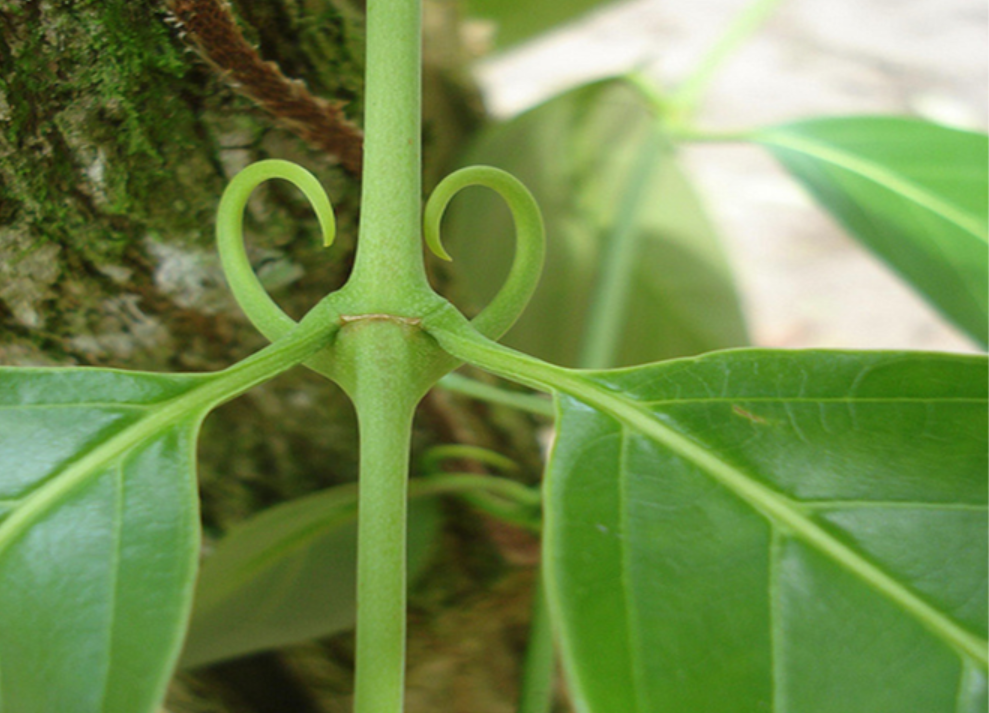Cat’s Claw

As an herb, cat’s claw is the common name for two related vines, Uncaria tomentosa and Uncaria guianensis, that grow in South and Central America. Their common name comes from the cat-claw-like thorns that grow along the vines. Both plants have a long history of traditional medicinal use for gastrointestinal conditions, for treating pain and for boosting immune function (Kaiser 2020). While current clinical trials are fairly limited, they suggest potential for treating arthritis and pain.
Cat’s Claw for Arthritis
Rheumatoid Arthritis
Rheumatoid arthritis is an autoimmune condition that attacks the joints of the body. A study on cat’s claw explored its use combined with standard medication for rheumatoid arthritis. In the first phase of the study, patients were given cat’s claw or a placebo for just under six months (Mur 2002). In the second phase, all patients were given cat’s claw for just over six months. As the study was small, pain reductions weren’t significant until after the second phase. At the end of phase two, cat’s claw supplementation had reduced the number of painful joints by half as compared to the end of phase one.
A study in rats compared cat’s claw extract to standard medications in a rat model of rheumatoid arthritis (Vilchez 2023). While the dose was arguably quite high, cat’s claw had an anti-inflammatory effect comparable to methotrexate, the standard first-line drug therapy.
Osteoarthritis
For osteoarthritis, the type of arthritis that is generally characterized as wear and tear on a joint, cat’s claw was found to be helpful (Piscoya 2001). Over the four-week study, patients’ pain with activity decreased by just over one-third, although pain levels at rest were not improved. Both physician and patient assessments also showed significant improvements. The author’s concluded that cat’s claw appears to be effective for osteoarthritis.
A separate trial compared glucosamine to a combination product containing cat’s claw (UG) and maca (Mehta 2007). After two months, over 90% of patients reported a greater than 20% pain reduction, with three-quarters of patients reporting more than 50%.
Further human trials are necessary to understand cat’s claws effects on arthritis. Worth noting, a research group has developed a fast dissolving oral film that may be a precursor to further research into cat’s claw as a treatment for arthritis (Sowjanya 2023).
Mechanisms
The root bark is the main constituent of cat’s claw used as a remedy. The bark contains high amounts of proanthocyanidins, compounds with known antioxidant and anti-inflammatory properties (Gonçalves 2005). Research suggests that cat’s claw inhibits tumor necrosis factor alpha (TNF-ɑ)(Allen-Hall 2010). TNF-ɑ is a common target of numerous drugs to treat autoimmune and other painful inflammatory conditions.
Other research also suggests immune stimulation from cat’s claw. A study in males given a pneumococcal vaccine were either taking cat’s claw or placebo (Lamm 2001). After vaccination, the response was stronger and lasted longer when administered one month before and after vaccination.
Additional petri dish studies show that cat’s claw also has antimicrobial properties. The herb appears to have effects against both bacterial and fungal species (Abdul 2022).
Conclusions
Cat’s claw is an herb from Central and South America with potential for treating inflammatory conditions among others. It may also help for immune stimulation and as an antimicrobial, although further research and clinical trials are needed to know real-world efficacy.



